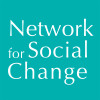F.5.b.iii.2. USA
A short report on a rising wave of pressure that is weighing on companies that seek sexual harassment insurance in the US.
After Weinstein accusers were nominated by Time as ‘Person of the Year’, this article explores the legacy left by the movement in the US one year since #MeToo exploded globally.
Estelle Freedman highlights the forces that have shaped the definition of rape in the US, namely political power and social privilege. She outlines the history of how the conception of rape has evolved since the 1870s to the 1930s, when both racial segregation and the women’s suffrage movement influenced how rape was understood.
Hobbs explores the tradition of testimony over sexual assault allegations by women of colour – from Harriet Jacobs’ case in 1861 up to now - and how that has facilitated testimony today in the US. She advocates a more inclusive narrative that can overcome the gender-only or race-only approach to telling stories of sexual abuse.
A comprehensive article exploring the legislative advances and what is yet to be accomplished in the US one year after the emergence of the #MeToo movement and #TimeIsUp campaigns.
This online report includes up-to-date links to the status of the legislation on sexual harassment in every state in the US.
This long article narrates the birth of the #MeToo movement and its development. It also provides a list of the more than 200 high-profile figures who were accused since 2017, which is constantly updated. (You can access the lost from here as well: https://www.vox.com/a/sexual-harassment-assault-allegations-list).
In this long article academics across a range of disciplines assess the factors that currently define the repercussions of and reactions to sexual harassment among survivors, perpetrators and in society in general. It explores the power of narrative in the post-Weinstein era; the waves of feminism that had led to the current movements; the role of culture and power in addressing gender relations and the power dynamics of sexual harassment; the role of formal policies and education in tackling sexual harassment, and the need to reframe masculinity.
The article sheds light on the need to include the struggle of women from lower social classes, who suffer harassment and sexual abuse, within the public exposure that the #MeToo movement achieved since 2017. It argues that understanding the dynamic of sexual harassment and sexual assaults in every working context is fundamental to understand how to end it.
Journalist Lucy Rock briefly explores the history of ‘sexual harrassment’ in the US since 17th century slavery. She then focuses on the 1990s up to the Harvey Weinstein scandal, a moment which she considers revolutionary because of the reforms it can lead to.
Argues that movements sparked by alleged rape accusations could be the most powerful force for equality since women's suffrage' and discusses their impact and challenges in politics and business in the US.
See also more detailed articles on the same issue: ‘#MeToo and politics; Truth and Consequences', pp. 36-37, and 'American business after Weinstein: Behind closed doors', pp. 59-60.
Investigative journalist Beatrice Yeung explores episodes of sexual violence that immigrant workers in the US experience in their workplace at the hands of employers who exploit them. It also gives an account of what type of reactions they face when they decide to denounce the abuses.
The year 2017 began with Trump’s presidency, sparking women’s marches in the U.S. and across the globe. This edited collection of empirical studies of the U.S. women’s movement focuses on sociological and historical data. It includes discussions of digital and social media, gender identity and the reinvigorated anti-rape climate, while also focusing on issues of diversity, inclusion, and unacknowledged privilege in the movement.
The authors begin by documenting the restorative origins of #MeToo, as well as exploring steps taken especially by Time's Up, to amplify and promote the credibility of survivors' voices, seek accountability, change workplace practices, and encourage access to the legal system. They then explore the key components of restorative justice: acknowledgement, responsibility-taking, harm repair, non-repetition, and reintegration. The aim is how these concepts might apply in the context of addressing sexual assault and harassment in the workplace and in the world at large.
This article makes comparisons between the pre-digital ‘Riot Girl’ movement of the 1990s, which developed out of feminist punk rock bands in the US, and MeToo. Both have named perpetrators of sexual violence, warned others about predators, and offered support to survivors. But those naming perpetrators have become much more liable to retaliation in the digital age. The author argues that the complex body of law related to whistleblowing provides a framework for MeToo accusers to express their anger and frustration, as the Riot Girl did.
Kohn discusses the allegations against high-profile perpetrators as a representative sample of the range of accusations raised generally by the #MeToo movement. She also analyzes the current responses available to redress these wrongs and then turns to the potential of restorative justice. This is conceived as a therapeutic form of dispute resolution that has enormous potential for eliciting the outcomes the #MeToo movement seek: true gender-equality, respect, and understanding.
Feminist legal scholar, writer, teacher, and activist Catharine A. MacKinnon discusses the #MeToo movement with Durba Mitra, professor of women, gender and sexualities studies. They discuss the origins of sexual harassment law and the relationship between the law and social movements. Other topics include the particular vulnerabilities faced by women of colour, immigrant women and trans people, and harassment in international law.
This book explores misogyny across the media, from political and editorial cartoons to news and sport. It also covers film, television, social media (especially Twitter), and journalistic organizations that address gender inequities. The authors argue that the conservative populism ushered in by President Donald Trump and the Republicans create the social-cultural and political environment that have prompted the #MeToo Movement and Fourth Wave Feminism in the US as a response. They argue, therefore, that the ‘social contract’ should be reinterpreted to create a just, gender- and race-equitable society.

 The online version of Vol. 1 of the bibliography was made possible due to the generous support of the
The online version of Vol. 1 of the bibliography was made possible due to the generous support of the  The online version of Vol. 2 of the bibliography was made possible due to the generous support of
The online version of Vol. 2 of the bibliography was made possible due to the generous support of